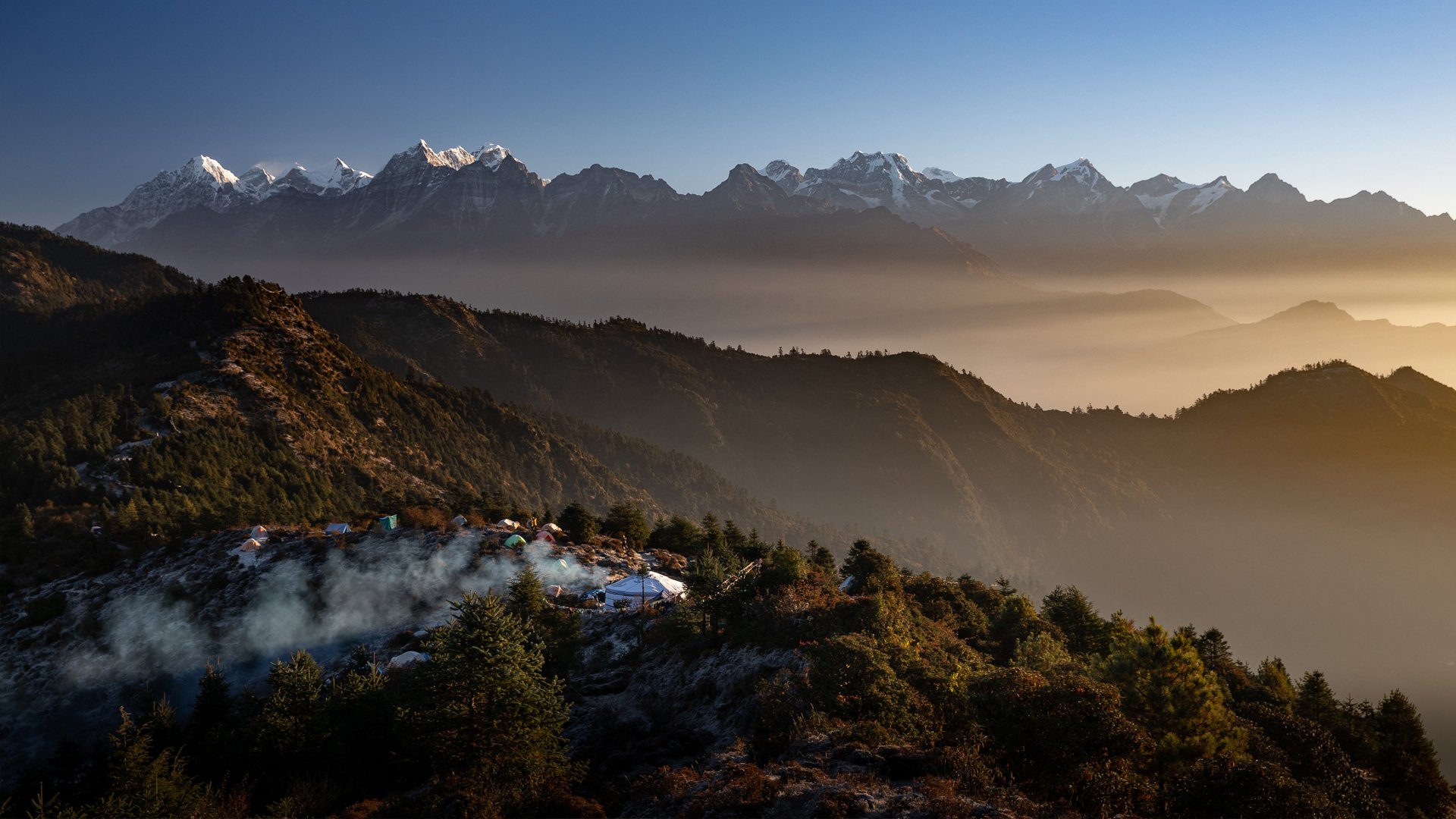On my third and last day visiting Chitwan National Park in Nepal, my regular guide there, Santosh Basnet, was pointing out some fresh scratch marks made on a tree by the apex predator of the park, the Bengal tiger. Examining the trunk of the tree, he extracted a strand of tiger fur, left behind when the cat leaned its belly against the tree while clawing it. Santosh had already pointed out fresh tiger tracks on our walk through the forest. The only protection Santosh and his fellow guide, Asbin, had brought were wooden staffs about 5 feet long. It is a measure of the utter faith in my guides that I had developed that I was not worried about becoming a tiger’s meal. Indeed, my only concern was whether I was going to spot a big cat–alas, I did not.
In my three days at the park—a former royal hunting ground that became Nepal’s first national park in 1973 and was named a UNESCO World Heritage site in 1984—I had gradually shed some of my 21st-century urban habits and learned to experience the tropical surroundings with more acute hearing, vision, and smell. My guide had a startling ability to discern a distant and indistinct shape as the back of a greater one-horned rhinoceros, or to spot a bird in flight and immediately peg it as a greater hornbill, or to I.D. a rustle in the bushes as a wild boar (which soon crossed our path). To be shown how to be a more perceptive wanderer in the forest was a great gift.

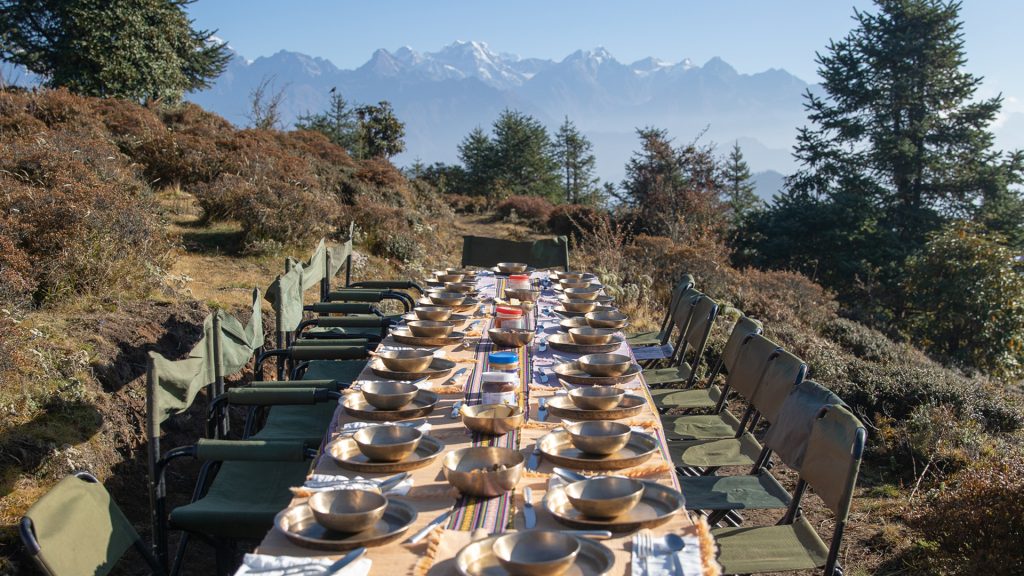
And I experienced similar gains in perception throughout my ten days in Nepal on a personalized tour arranged by &Beyond, the “experiential travel company” that offers “forward-thinking” travelers curated experiences at locations in Africa, South America, and south Asia. While the accommodations were all first rate, and the food delicious and plentiful, the experiences were sometimes challenging—physically, emotionally, and even philosophically. But it was the best kind of challenge, and the guides invariably were there to explain, to lead, to fan one’s curiosity. For the habitually curious person, this is travel at its best.
Nepal’s Diverse Landscapes and Culture
The trip featured Kathmandu as the home base, starting with two nights in Dwarika’s Hotel, followed by a three-night excursion north into the foothills of the Himalayas to stay at the Happy House, a small inn in the town of Phaplu, at an elevation just below 9,000 feet. Then a return to Kathmandu for a night, and on to Chitwan in the south to stay at the Taj Resort Meghauli Serai, and finally back to Kathmandu for more sightseeing before returning home.
What I did not know when I set out was how distinct each of the three areas were, each with their own topography, religious practices, local vocabulary, and ethnic stocks. Nepal is a country that ranges from the heights of Mt. Everest through the ancient trading routes across the Kathmandu Valley and down to the Terai plain where Chitwan National Park lies, nearly at sea level.

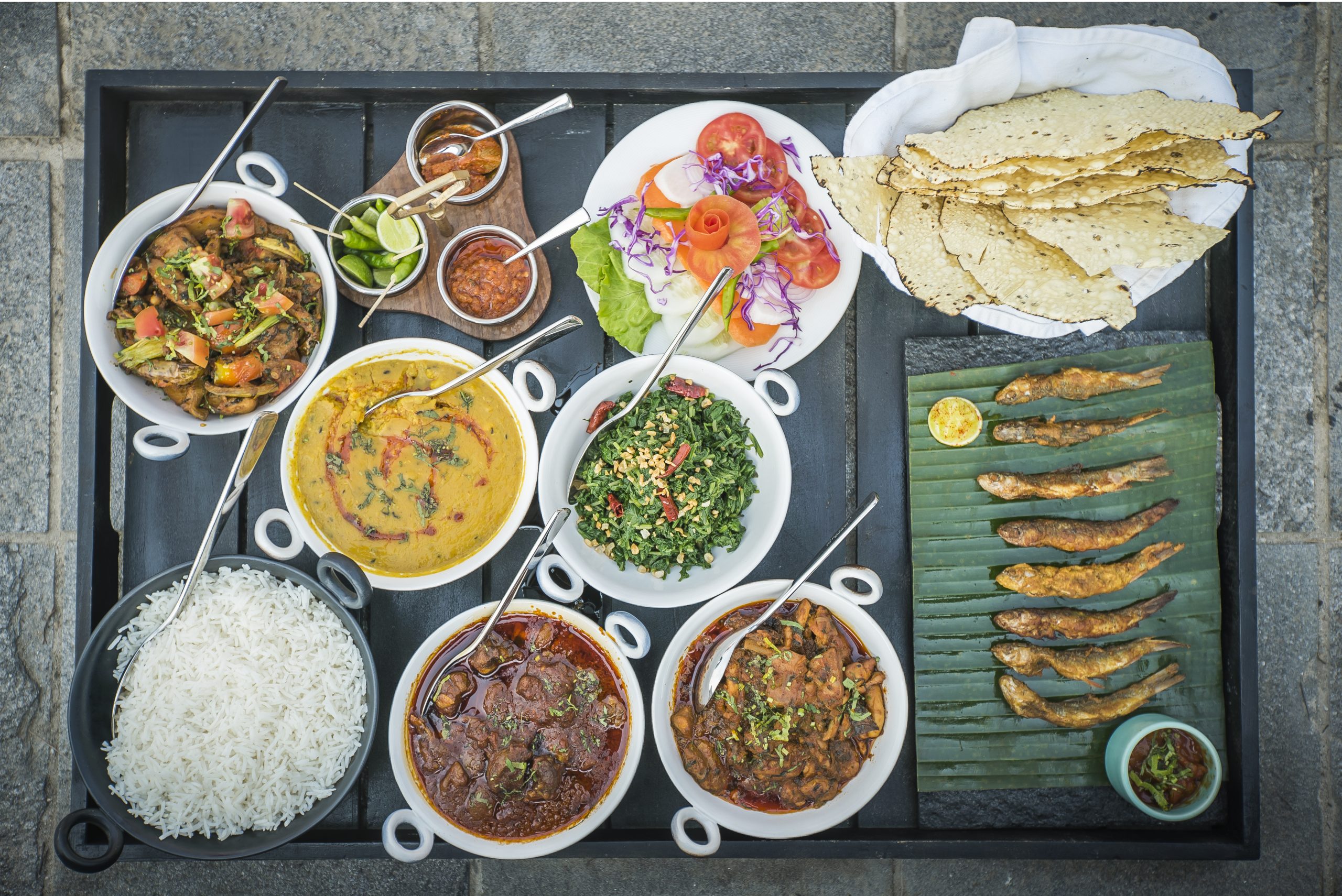
Dwarika’s is a story in itself—the eponymous founder became fascinated with the exquisite wood carving done by the Newars—the dominant ethnic group in the Kathmandu Valley—and in the 1950s started to salvage carved window- and door-frames from demolished buildings. By 1970 he was ready to start building. Today, the hotel has 80 rooms, with 40 more under construction. Although the hotel’s origin is recent, the look is in keeping with traditional Newari design, each room lovingly decorated with the work of local artisans—a pleasing meld of wood, terra cotta, stone, and fabric.
Soon after my arrival, I met Ramesh Acharya who was to be my guide that day in Kathmandu. We set out for a UNESCO heritage site called Pashupati. As the driver negotiated the traffic, Ramesh announced that our first stop there would be the ghats along the Bagmati river, where after death Hindus are bathed in water and milk and then cremated, a ritual cleansing to purify them for passage into the next life. We stood on one side of the river while on the other side families, friends, and neighbors mourned and attendants tended the fires, occasionally adding wet rice straw to the top of a pyre to concentrate the heat. Ramesh explained that for poor families, the $150 cost of the pine logs could be a harsh expense—and that wealthier families, who undertook their ceremonies a bit upstream, might pay four times that to secure sweeter-burning sandalwood.
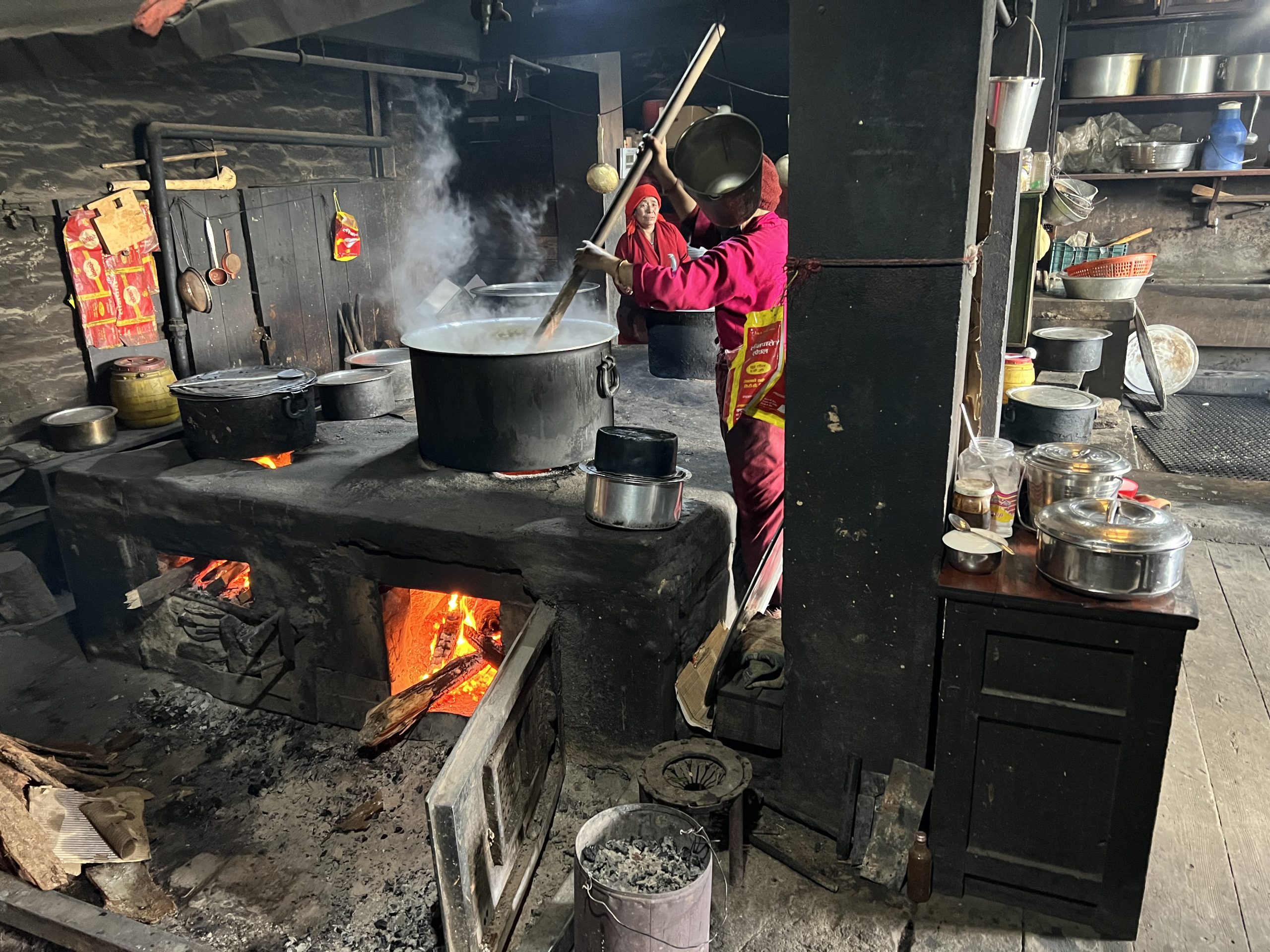
It was, for a traveler unmoored by jet lag, a challenging opening scene. But the gentle seriousness with which Ramesh explained the rites and their purposes overcame my initial discomfort as it became clear that if I meant to understand Nepal, I had to try to understand this.
Our next stop was one of Kathmandu’s most important Buddhist sites, the Boudhanath Stupa. A stupa is a hemispherical mound, usually containing some holy relic. The Boudhanath Stupa (another UNESCO site) is a bright white dome, surmounted by a golden spire. Visitors hoping to enhance their karma take buckets filled with water and saffron blossoms and fling the contents in a series of arcs across the white dome, creating a pattern like a lotus blossom, symbol of purity and spiritual awakening. The stupa is surrounded by a ring of brick buildings that have grown up around it over the centuries, now occupied by souvenir shops, guest houses, restaurants, and a Tibetan Buddhist temple in which monks were chanting solemnly to percussive accompaniment.
We moved from the sacred to the secular after that, driving to the nearby city of Bhaktapur, which along with Kathmandu and a third city, Patan, dominate the valley and hold great examples of the arts and crafts of the Newars. Each city has a Durbar (Royal) Square, where temples and a royal palace provide a focus for public life. In Bhaktapur, the palace is called the 55-window Palace, and displays the sort of exquisite wood carving that inspired Dwarika to build his hotel. Nearby Pottery Square displays samples of one of the distinctive crafts of the Newars, and along the way, local metalsmiths offer singing bowls.
The next day, I was to proceed to the Happy House.
Hearty Hikes from Happy House
At Kathmandu airport I met Ang Tshering Lama, who would be host, guide, and interpreter of many things in the next three days in Phaplu, at the well-named Happy House. This guest house offers hikes of varying difficulties as well as wellness experiences, tasty meals around a common table, and the thinner, rarer air of the Himalayan foothills. Our trip to Phaplu was by a small helicopter. As we headed northwest from Kathmandu, we slipped in and out of clouds as we skirted the tops of ever-higher hills, many terraced to make room for small fields upon which grow millet, buckwheat, and other crops. After about 40 minutes in the air, we landed at Phaplu on a postage stamp of an airstrip a short walk from the Happy House.
Its name refers to time spent there and in the vicinity by Sir Edmund Hillary, who with his Sherpa guide Tenzing Norgay was the first to summit Everest (at least, the first we know of—some believe that George Mallory and Sandy Irvine did reach the summit in 1924 before their deaths, but there is no proof for this). Hillary’s fondness for the area and his gratitude to the Sherpa people led him to found both a school and a hospital nearby—Ang was born in that hospital.
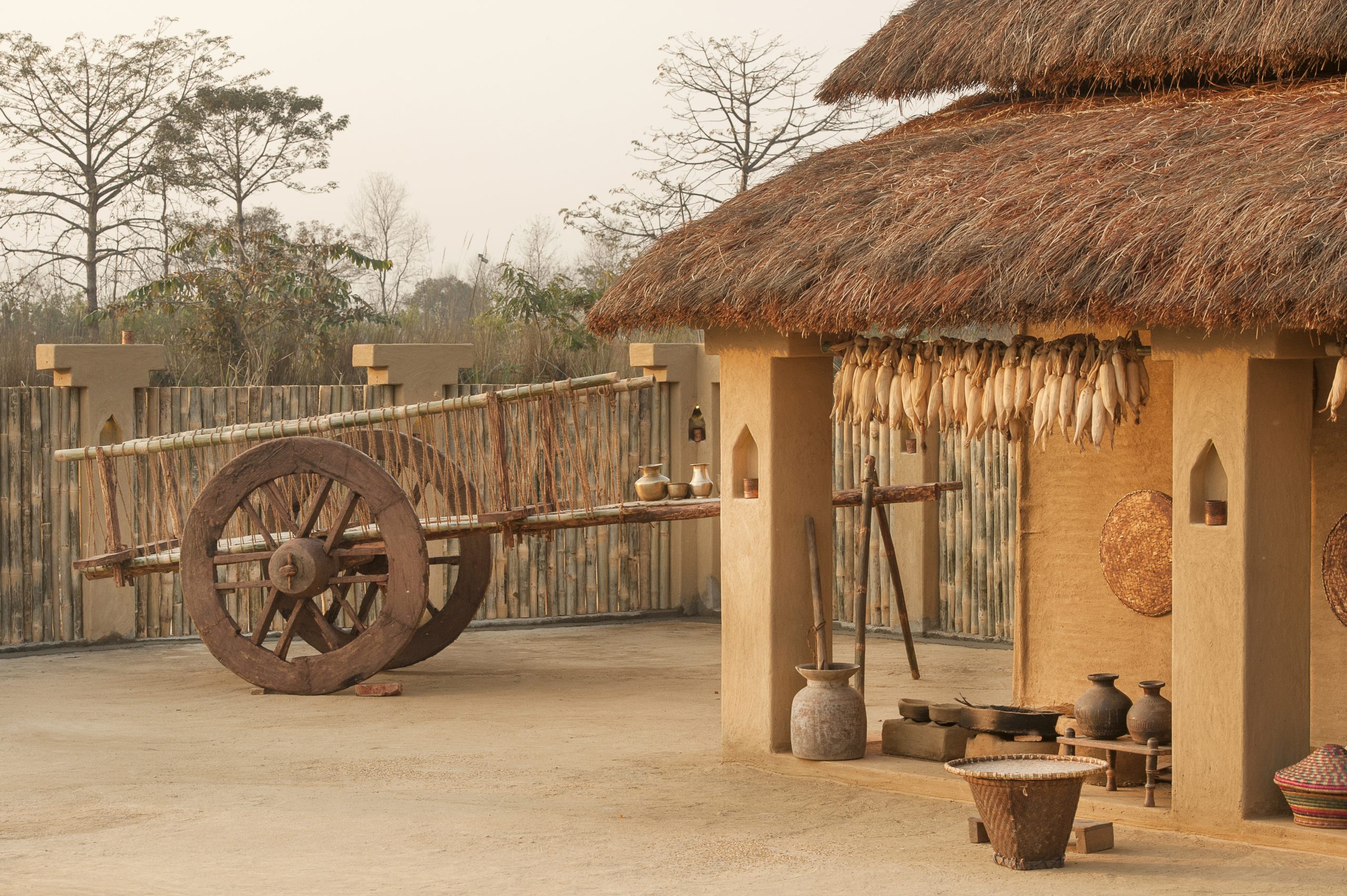
But Ang’s family’s experience of the place has not been entirely happy. Between 1996 and 2006, Nepal was riven by a slow-burning civil war between Maoist rebels and the royal government of Nepal. In the fall of 2001, Maoist forces launched attacks on government assets in 42 provinces, and Ang’s father, who was mayor of the village, was targeted. A friend heard of the plot and sent a warning, and when the Maoists came, Ang’s parents hid under the floorboards of the main room of the Happy House. The next day they fled, eventually coming to the U.S., where they now live. In 2006 a negotiated settlement ended the war, and in 2007 the monarchy was abolished. Ang, who attended college in New York, eventually returned to Phaplu and in 2017 began restoring the house, which opened to guests in 2018.
The rooms are uncluttered and of ample size, with delightfully comfortable beds, rendered even more comfy by the hot-water bottle one discovers between the sheets. I turned in that first night after a lovely afternoon—one shaped, but not dampened, by the rain that arrived not long after we landed in Phaplu. I indulged in a massage in a yurt in the backyard, warmed by a fire in the wood stove and serenaded by the rain thrumming on the canvas roof. At dinner, I found a wonderfully interesting assortment of other guests. As we were served local specialties we got acquainted and grew into a merry band, doubtless helped by the waitstaff, who ensured that no wine glass went unfilled.
The next day, after an alfresco breakfast, some of us were taken by 4WD truck up primitive roads to the Thupten Choeling monastery, an important place for the Buddhists who started coming to this part of Nepal from Tibet centuries ago, and who came in great numbers after the bloody Chinese crackdown on Tibet in 1959. We shed our shoes and entered a room in which dozens of monks and nuns were chanting. I sat down and tried to enter the spirit of the place. A young woman visitor seated next to me asked if I know how to meditate. I nodded. Then she said, “This is the most powerful place on earth.”
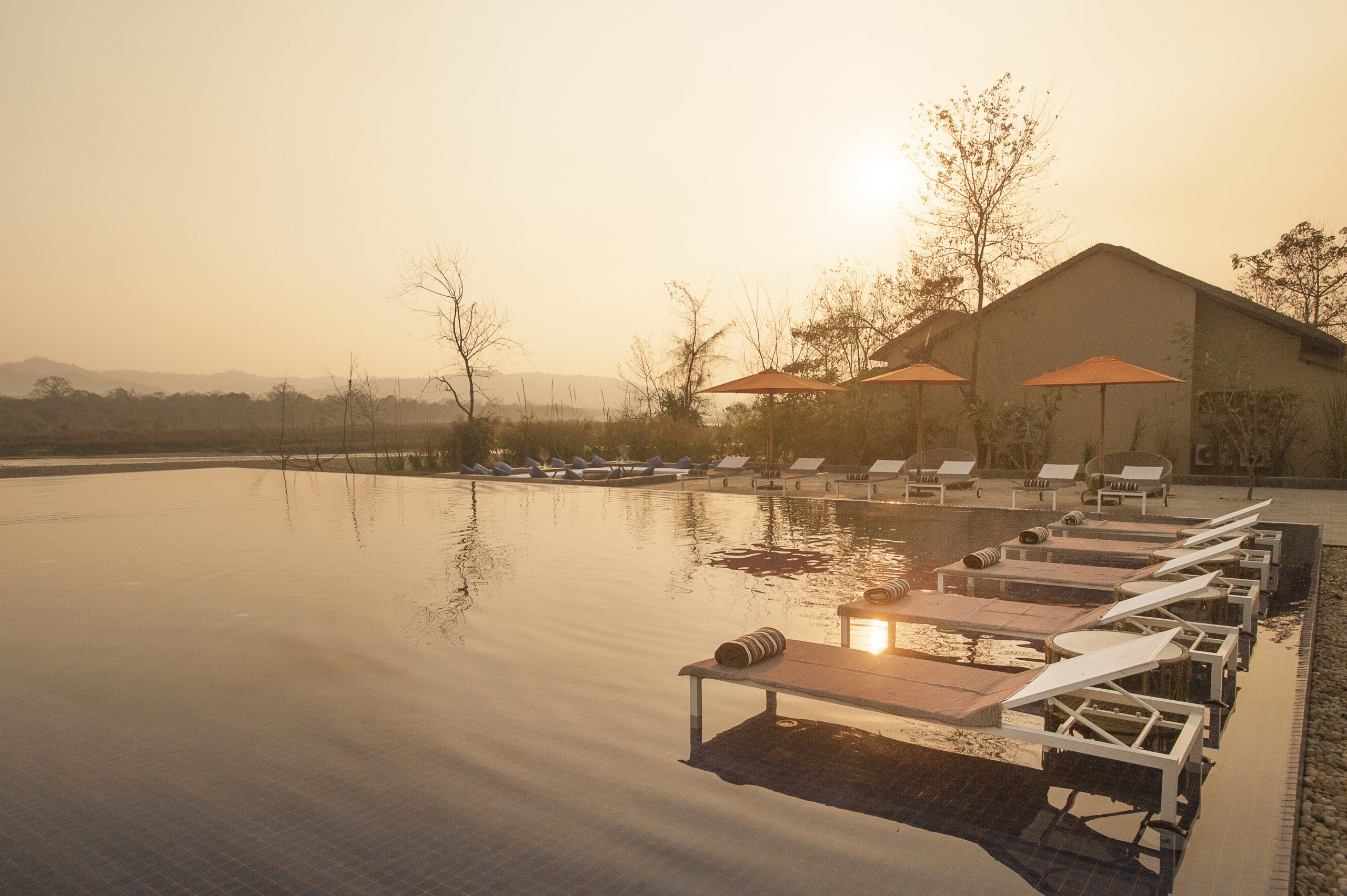
Soon they broke for lunch, and we headed downstairs to tour the kitchen. We were told there were about 500 monks and nuns there, and the kitchen contained a huge wood-fired stove with enormous pots in which the vegetarian meals are cooked. We hiked down from the monastery, through forest and farmland, beside a river, and to the town of Junbesi for a simple lunch. Then we returned to the Happy House, for an evening of more food (and for me, less wine—altitude must be respected).
Having acclimated to the height a bit, we were led the next day on a hike up to the Chiwong monastery. Ang went with us, as did a couple of staff folks to carry supplies and make sure we all arrived safely. (Later, I learned that the young man leading the line had summited Everest twice and has also climbed a number of other famous peaks; Ang himself, we learned, climbed Everest last year.)
Hiking up from Happy House we traversed small fields, crossed into woods filled with blooming rhododendron trees. I had heard that one of the Happy House dogs (there are many, who recline in contentment around the inn’s grounds) had scars from tangling with a local leopard. “What kind of leopard?” Ang was asked. “A common leopard.” Of course, this was to distinguish it from the famous snow leopard. But to a person hiking the trail with nothing better than a battered trekking pole to defend himself with, the notion that any kind of leopard could be called “common” here was unsettling. No leopards were spotted.
Arriving at the monastery, we learned it was founded by Ang’s great-great-great grandfather in 1923. It had suffered considerable damage in the 2015 earthquake, and signs of ongoing repairs were widespread. The walls are adorned with Buddhist art, and Ang patiently and passionately explains the stories and theology behind the symbolism of the paintings. When he finished, one member of the group said, “I learned more about Buddhism in the past half hour than I did in a full-semester course on the topic in college.”
Natural Wonders With Luxury Accommodations
The next morning it was back to Kathmandu, and then the following morning a short flight south to Chitwan National Park. At the Meghauli Serai resort we left frantic Nepali roads behind and entered a tranquil oasis where curving paths and thoughtful landscaping unfolded a variety of environments and accommodations. I was taken to my room, a River Villa. The villa is large, with indoor and outdoor showers, a bathtub, a huge, canopied bed, and a private swimming pool. Bed and pool overlook the Rapti River, where (across the stream) the next morning a mother and baby greater one-horned rhinoceros would be taking their morning constitutional.
But upon arrival, it was time for a quick lunch (the food sourced from local farms and rivers) and then to be briefed by Santosh on the history and wildlife of the park. The afternoon’s focus was on a boat ride along the river, where we saw crocodiles, cranes, langur monkeys, and one of the park’s stars, the severely endangered gharial, a toothy fish-eating crocodilian that can grow to nearly 20 feet in length.
That evening, in a small clearing on the property, guests were entertained by local musicians and dancers performing the music of the Kumal, an ethnic group famed for their pottery. The resort encourages strengthening local traditions and cultures by providing audiences and support for the groups.
The next morning, I joined Santosh for a three-hour drive through the park. There are three distinct environments in the park–grasslands (a favorite haunt of the rhinos), riverine forest, and the sal forest that makes up the great majority of the domain. The sal forest is named for the sal tree, which furnishes the lumber that so richly adorns the facades of royal palaces, and temples (and Dwarika’s Hotel). Spotted deer are common in the forests and are the favorite item in the diet of the tiger. At first I felt like a hopeless city slicker (which I doubtless am), as Santosh quickly sighted and identified all manner of bird and beast. I juggled camera and binoculars trying to keep up, and too often failed to spot the critter in question. But slowly, my senses sharpened, and by the end of the expedition, I was able to track his sightings of rhinos, birds, and other park denizens.
After the morning’s explorations, my sampling of the resort’s amenities continued with a lovely 90-minute massage, and then the “drive and dine” experience, which took me to lunch with Binny Sebastian, the resort’s general manager, by a river in the local “community forest”—a park borderland where local residents are allowed to gather items they formerly would have found inside the park. Lunch was followed by a drive through the forest where more deer, fantastically colored birds, and monkeys witnessed our progress.
On the next morning’s walking safari, Santosh pointed out, in addition to the tiger’s claw marks, the horizontal slash marks of the sloth bear (a true bear, with long claws like those of the sloth) on an embankment where the bear foraged for grubs, and later noted other scratch marks on a tree that showed where a spotted deer had rubbed the velvet off its horns to toughen them up.
In the afternoon, Santosh took me for a quick visit to a local Tharu village. The traditional Tharu dwellings have walls fashioned of upright stands of elephant grass, braced with horizontal bamboo poles, and cemented together with a mortar of mud and dung. The homes are painted with traditional decorations, including comma-shaped patterns in alternating blue and pink, which Santosh noted were made by dipping the heel of a closed fist in paint and pressing it against the wall.
The last night in Meghauli Serai featured a dinner at another outdoor space on the property, with entertainment by an impressive ensemble of Tharu musicians and dancers. My trip ended back in Kathmandu with visits to more sights in Patan and the capital, and then the journey home.
Thanks to the care with which &Beyond had planned my itinerary and selected its guides, the experience of Nepal I had was far more intense and affecting than I had anticipated. I had traveled there expecting to see marvelous things, as I did. But I had not expected to be inspired to think as much or as seriously about local religious practices and beliefs, or to get such a visceral sense of the country’s recent history, or such an intimate immersion in its different ecosystems. I ended my trip feeling a bit tired, but it was the tiredness that comes from a worthwhile exertion, and savored more of achievement than of fatigue.
The morning I left the Happy House, in the middle of my trip, three of my new friends were setting off on a three-day hike (accompanied by guides and porters) that would take them to a summit with a glorious view of the highest part of the Himalayan chain, including Mt. Everest itself. On the last morning of my trip, back in Kathmandu, I ran into two of them at breakfast at Dwarika’s. They told me of their climb, its incidents and challenges, and showed me a photo taken at the summit of their climb, with vast white peaks shining in the distance.
I was sorry to have missed it, but it gives me ample reason to return. And maybe next time I will see a tiger, too.

